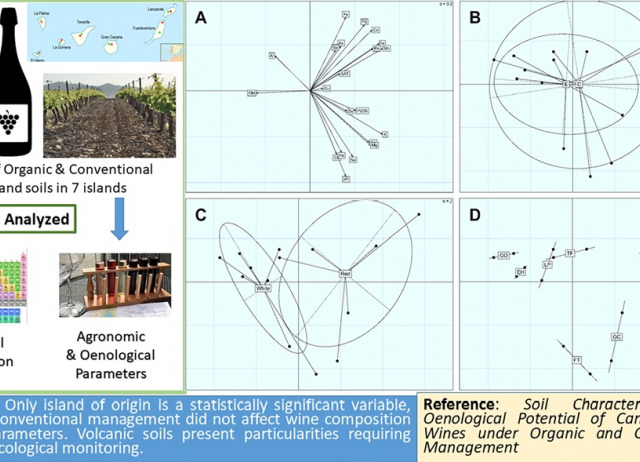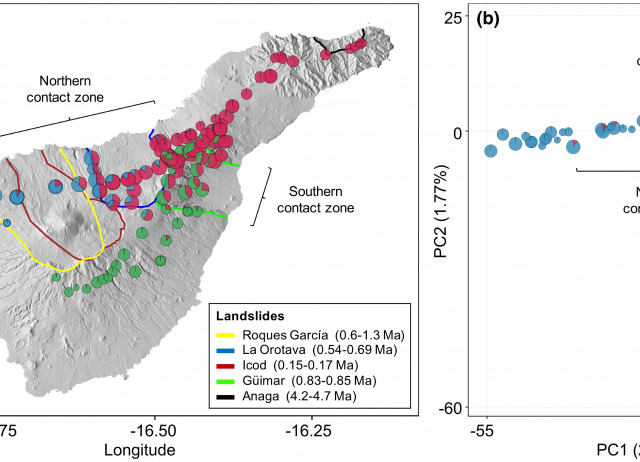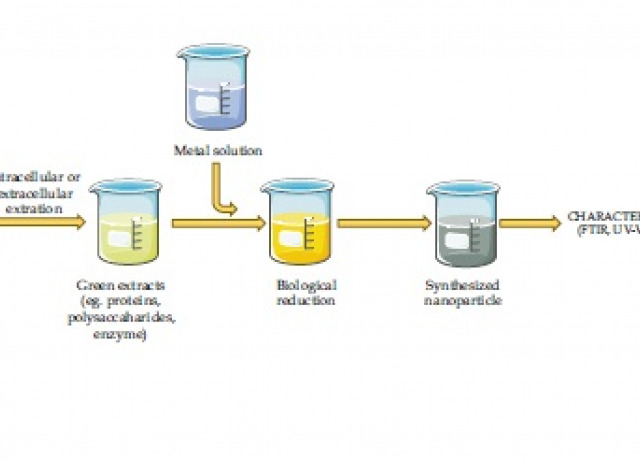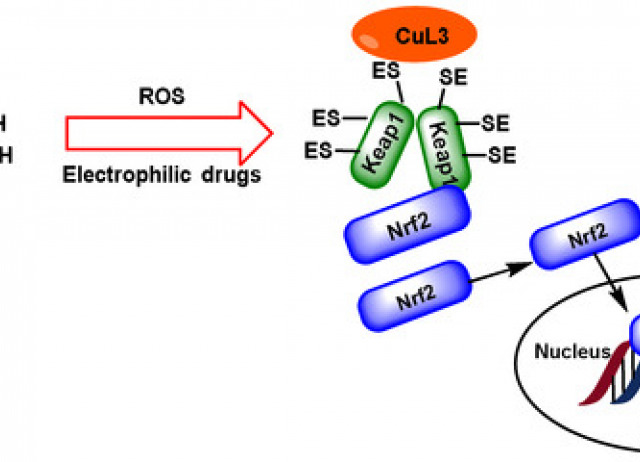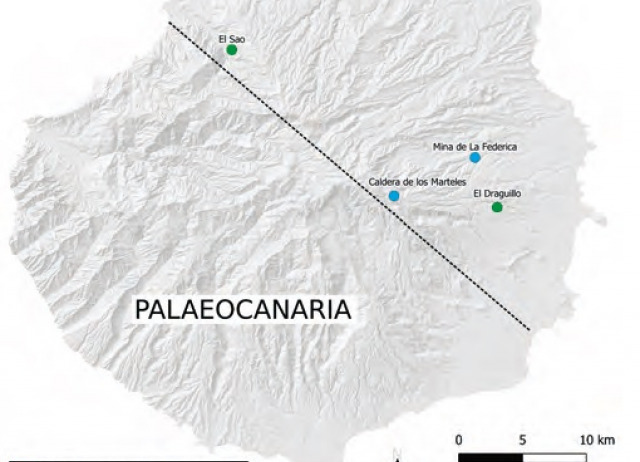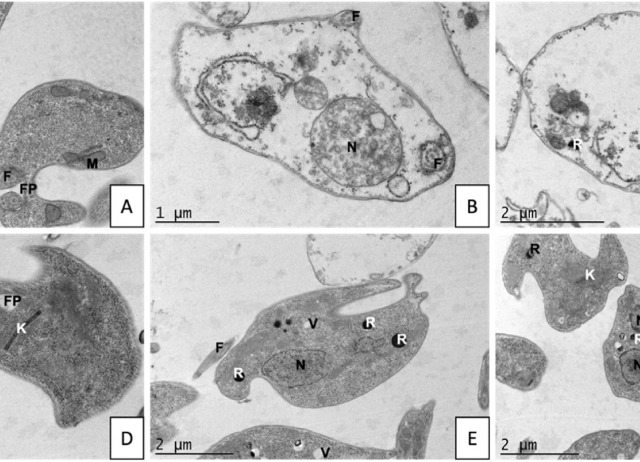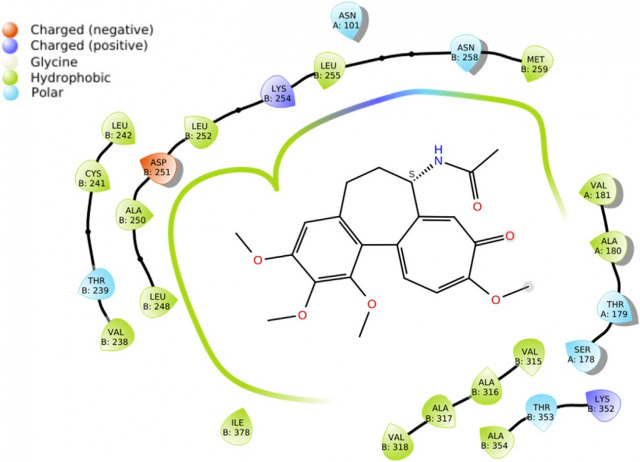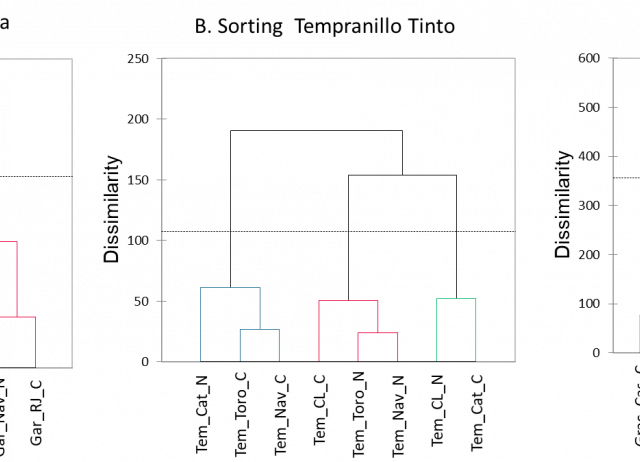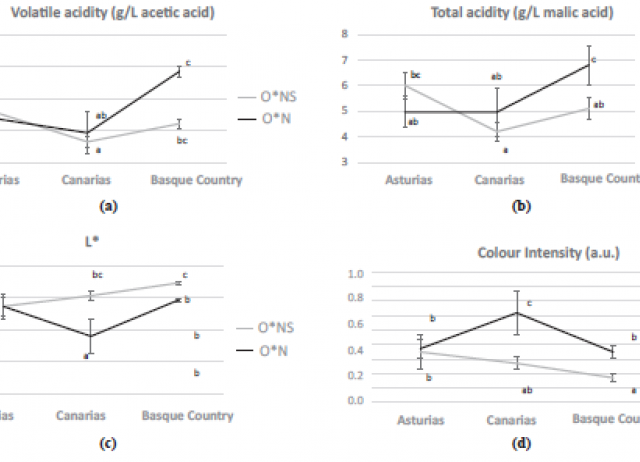
Sensory-directed approach to explore cider typicity: the case of ciders from the Canary Islands (Spain)
Purpose:
The main aim of this study is to characterise and identify specific chemo-sensory profiles of ciders from the Canary Islands (Spain).
Design/methodology/approach:
Commercial samples of Canary ciders were compared to ciders from the Basque Country and Asturias. In total, 18 samples were studied, six for each region. The analysis comprised their sensory profiling and chemical characterisation of their polyphenolic profile, volatile composition, conventional chemical parameters and CIELAB colour coordinates. In parallel, the sensory profile of the samples from the Canary Islands was first compared with their Basque and Asturian counterparts by labelled sorting task. Then, their specific aroma profile was characterised by flash profile. Further quantification of sensory-active compounds was performed by GC–MS and GC-FID to identify the volatile compounds involved in their aroma profile.
Findings:
Results show that Canary ciders present a specific chemical profile characterised by higher levels of ethanol, and hydroxycinnamic acids, mainly t-ferulic, t-coumaric and neochologenic acids, and lower levels of volatile and total acidity than their Asturian and Basque counterparts. They also present a specific aroma profile characterised by fruity aroma, mainly fruit in syrup and confectionary, and sweet flavours related to their highest levels of vinylphenols formed by transformation of hydroxycinnamic acids.
Originality/value:
An integrated strategy to explore the typicity of the currently existing Canary ciders in the market was developed. The results are important in that they will help other regions to identify specific typical chemo-sensory profiles and to promote the creation of certifications supporting regional typicity.
Di Fede, Roberto Salvatore; Gonzalez-Hernandez, Marivel; Parga-Dans, Eva; Alonso-González, Pablo; Fernández-Zurbano, Purificación; Peña del Olmo, María Cristina; Sáenz-Navajas, María-Pilar.
Unveiling terroir: evaluating the magnitude of the heterogeneity and its main drivers in the Canary Islands wines
The Canary Islands are a Spanish archipelago of volcanic origin in the Atlantic Ocean near the Saharan coast. The extensive intricacy and multitude of variables inherent in the Canary Islands winemaking tradition have posed a substantial challenge, preventing comprehensive research on the main factors contributing to the character of local wine, thus, far. This challenge arises from a convergence of factors including the presence of 14 different grape varieties, and radically different climatic, soil and geographic conditions. This investigation sought to start unraveling this complexity by discerning the impacts of various geographical (specifically, island-related) and management factors (namely, organic vs. conventional practices) on soils and wines within the Canary Islands. Additional variables, such as wine type (red and white) and island of origin, were explored and correlated with the chosen management system. Pairs of organic and conventional wine and soil samples, possessing similar characteristics, were systematically collected from each of the seven wine-producing islands in the Canary archipelago. An examination of elemental composition, oenological attributes and fertility parameters was conducted, followed by comprehensive statistical analysis. Among the variables examined, only the island of origin emerged as statistically significant within the sample. Concerning soil fertility, organic samples exhibited elevated levels of organic matter compared to their conventional counterparts. No notable disparities were observed between the two production methods in terms of soil metal composition and other fertility parameters. However, it is noteworthy that four soil samples surpassed the legally permissible limits for Nickel (Ni) and Mercury (Hg), with three of these instances originating from Lanzarote.
Alonso-González, Pablo; Parga-Dans, Eva; Hernández González, María Mercedes; Arribas, Paula; Acosta Dacal, Andrea Carolina; Pérez Luzardo, Octavio.
Genetic legacies of mega-landslides: Cycles of isolation and contact across flank collapses in an oceanic island
Catastrophic flank collapses are recognized as important drivers of insular biodiversity dynamics, through the disruption of species ranges and subsequent allopatric divergence. However, little empirical data supports this conjecture, with their evolutionary consequences remaining poorly understood. Using genome-wide data within a population genomics and phylogenomics framework, we evaluate how mega-landslides have impacted evolutionary and demographic history within a species complex of weevils (Curculionidae) within the Canary Island of Tenerife. We reveal a complex genomic landscape, within which individuals of single ancestry were sampled in areas characterized by long-term geological stability, relative to the timing of flank collapses. In contrast, individuals of admixed ancestry were almost exclusively sampled within the boundaries of flank collapses. Estimated divergence times among ancestral populations aligned with the timings of mega-landslide events. Our results provide first evidence for a cyclical dynamic of range fragmentation and secondary contact across flank collapse landscapes, with support for a model where this dynamic is mediated by Quaternary climate oscillations. The context within which we reveal climate and topography to interact cyclically through time to shape the geographic structure of genetic variation, together with related recent work, highlights the importance of topoclimatic phenomena as an agent of diversification within insular invertebrates.
Noguerales, Víctor; Arjona, Yurena; García-Olivares, Víctor; Machado, Antonio; López, Heriberto; Patiño, Jairo; Emerson, Brent C.
Harnessing the Power of Metallic Nanoparticles: Antimicrobial Peptide Functionalization with Gold and Silver Nanoparticles
This book accumulates the most recent advancements in the field of bioengineering regarding hybrid science named nanobiotechnology and enriches the readers with vast and comprehensive knowledge about different biomedical applications of nanomaterials. It includes drug and gene delivery, tissue engineering, antimicrobial properties, hyperthermia, cancer therapy, bioimaging, biosensing, photoablation therapy, etc., utilizing the potential of different nanomaterials that are helpful for the well-being of diseased individuals. Furthermore, the concerns about multidrug-resistant microorganisms are increasing daily in the healthcare system. Since conventional therapies fail to combat various infectious diseases, novel nanotechnology techniques provide an alternative approach to developing innovative biomaterials. The novel features of nanomaterials need to be exploited for use in the biomedical engineering domain. They should be fabricated so that the novel multifunctional nanomaterials notonly improve drug efficacy but also reduce their side effects. Moreover, a detailed understanding of the nanotoxicological effects of promising biomedical nanomaterials should necessarily be explored using the cell culture approach. Corona of nanomaterials should be investigated in detail to determine its fate in the biological system regarding safety concerns. This is the most important feature that is novel and explored in this book and would be very helpful for customers like clinicians, scientists, engineers, and technicians who will gain extensive knowledge from this book and work together to get the desired results in the healthcare sector.
González-Almécija, Beatriz; López, R. Manuel; Asensio-Calavia, Patricia; Otazo-Pérez, Andrea; González-Acosta, Sergio; Morales-delaNuez, Antonio; Pérez de Lastra, José Manuel.
Electrophilic Compounds in the Human Diet and Their Role in the Induction of the Transcription Factor NRF2
The phrase “Let food be thy medicine…” means that food can be a form of medicine and medicine can be a form of food; in other words, that the diet we eat can have a significant impact on our health and well-being. Today, this phrase is gaining prominence as more and more scientific evidence suggests that one’s diet can help prevent and treat disease. A diet rich in fruits, vegetables, whole grains, and lean protein can help reduce the risk of heart disease, cancer, diabetes, and other health problems and, on the other hand, a diet rich in processed foods, added sugars, and saturated fats can increase the risk of the same diseases. Electrophilic compounds in the diet can have a significant impact on our health, and they are molecules that covalently modify cysteine residues present in the thiol-rich Keap1 protein. These compounds bind to Keap1 and activate NRF2, which promotes its translocation to the nucleus and its binding to DNA in the ARE region, triggering the antioxidant response and protecting against oxidative stress. These compounds include polyphenols and flavonoids that are nucleophilic but are converted to electrophilic quinones by metabolic enzymes such as polyphenol oxidases (PPOs) and sulfur compounds present in foods such as the Brassica genus (broccoli, cauliflower, cabbage, Brussel sprouts, etc.) and garlic. This review summarizes our current knowledge on this subject.
Curieses Andrés, Celia María; Pérez de Lastra, José Manuel; Bustamante Munguira, Elena; Andrés Juan, Celia; Plou Gasca, Francisco José; Pérez Lebeña, Eduardo.
Resiliencia del pinar canario después de la erupción del volcán Tajogaite (La Palma, 2021)
Durante 85 días (19 de septiembre – 13 de diciembre de 2021), la isla de La Palma sufrió el mayor evento eruptivo desde que se tienen registros históricos. El volcán Tajogaite emitió una gran cantidad de materiales volcánicos y gases, afectando a la población, a la economía local y a la biodiversidad. Tres ecosistemas se vieron afectados: matorral costero, matorral termófilo y pinar canario, siendo este último el que resultó más dañado, especialmente desde el cráter hasta 7 km hacia el sur de la isla. A pesar de ser un hábitat ampliamente estudiado, nunca se había evaluado el impacto de una erupción volcánica sobre su biodiversidad. Este estudio se ha centrado en este ecosistema, a similar altitud del cráter, a lo largo de la dorsal de Cumbre Vieja. Los resultados muestran que la velocidad de recuperación del pinar es más rápida de lo que se pensaba, permitiendo entender mejor los efectos de una erupción volcánica sobre la biodiversidad canaria.
Guerrero Campos, María; Marrero Rodríguez, Patricia; García Becerra, Rafael; Miranda García-Rovés, José Carlos; Domínguez Flores, Tania; Chano González, Víctor; Fariña Trujillo, Beatriz; Nogales, Manuel; Manuel Medina, Félix.
A new eyeless Poecilochroa Westring, 1874 (Araneae: Gnaphosidae) from Gran Canaria, Spain
The mesovoid shallow substratum (MSS) of Gran Canaria is known to harbour a rich and diverse underground fauna. Since the 2000s surveys have been intensified in this island and the number of species associated with caves and MSS has steadily increased, now exceeding fifty species. In this study we describe another MSS species from Gran Canaria which is also the first eyeless member of the spider family Gnaphosidae from the Canary Islands. The new species is only tentatively placed in Poecilochroa Westring, 1874 and is named P. exoculata sp. nov.
Lissner, Jørgen; Suárez, Daniel; López, Heriberto.
Acrylonitrile derivatives: In vitro activity and mechanism of cell death induction against Trypanosoma cruzi and Leishmania amazonensis
Leishmaniasis and Chagas disease are parasitic infections that affect millions of people worldwide, producing thousands of deaths per year. The current treatments against these pathologies are not totally effective and produce some side effects in the patients. Acrylonitrile derivatives are a group of compounds that have shown activity against these two diseases. In this work, four novels synthetic acrylonitriles were evaluated against the intracellular form and extracellular forms of L. amazonensis and T. cruzi. The compounds 2 and 3 demonstrate to have good selectivity indexes against both parasites, specifically the compound 3 against the amastigote form (SI = 6 against L. amazonensis and SI = 7.4 against T. cruzi). In addition, the parasites treated with these two compounds demonstrate to produce a programmed cell death, since they were positive for the events studied related to this type of death, including chromatin condensation, accumulation of reactive oxygen species and alteration of the mitochondrial membrane potential. In conclusion, this work confirms that acrylonitriles is a source of possible new compounds against kinetoplastids, however, more studies are needed to corroborate this activity.
Bethencourt-Estrella, Carlos J.; Delgado-Hernández, Samuel; López-Arencibia, Atteneri; San Nicolás-Hernández, Desirée; Salazar-Villatoro, Lizbeth; Omaña-Molina, Maritza; Tejedor, David; García-Tellado, Fernando; Lorenzo-Morales, Jacob; Piñero, José E.
Synthesis, biological and computational evaluation of novel cyanomethyl vinyl ether derivatives
This work explores the biological evaluation of novel cyanomethyl vinyl ether derivatives as antiproliferative agents. Tubulin, crucial to microtubule structure and function, is a target for cancer therapies. In vitro cytotoxicity assessments revealed significant activity in SKOV3 ovarian carcinoma cells and A549 lung carcinoma cells. Structure-Activity Relationship (SAR) analysis indicated that the E isomer and specific substitutions influenced the biological activity. Computational assays predicted favorable ADME properties, highlighting potential as anticancerous agents. Molecular docking studies demonstrated that compound 12E, with the E geometry of the double bond and fused polyaromatic rings such as phenanthrene, has robust interaction with tubulin, suggesting enhanced stability due to diverse amino acid interactions. Comparative spatial distributions with colchicine further indicated potential mechanistic similarities.
Martín-Encinas, Endika; Fuertes, María; Delgado-Hernández, Samuel; García-Tellado, Fernando; Tejedor, David; Alonso, Concepción.
Sensory attributes and quality perception of red natural wines: a comparative study in Spain and France
Although the definition of natural wine remains contested and still lacks official recognition, it can be broadly described as a wine made with organic or biodynamic grapes without oenological additives in the cellar and minimal intervention in all winemaking stages. Despite growing interest in natural wines, uncertainty prevails about their sensory and quality attributes among both consumers and experts. In light of this research gap, this study aims to determine, first, if there are specific sensory dimensions allowing to differentiate natural wine as a wine category from conventional wines; second, if this sensory dimension affects the perception of the quality; and third, to characterise the physicochemical differences in terms of basic oenological parameters between natural wines and their conventional counterparts. To do so, 24 red wines (12 self-defined as natural and 12 conventional wines) were sensory and chemically characterised. The sensory evaluation was first carried out by winemakers from Spain. It consisted of a descriptive task (labelled sorting task) followed by a quality evaluation under two conditions: with and without information regarding the production method. A second panel of French experts carried out the same quality assessment, also with and without information. The aim was to find out whether expectations existed linked to each type of wine and to explore potential cross-cultural effects. The results of the labelled sorting task showed that natural wines tended to be different from conventional wines, but the difference was not clear-cut. However, natural wines were perceived to be of lower quality than their conventional counterparts, both with and without the information provided, regardless of the origin of winemakers. Results of the chemical analysis showed that natural wines presented higher values for volatile and total acidity and turbidity, while they had lower values for total and free sulphur. The study points to the existence of sensory dimensions with an impact on overall quality associated with the production method.
Ballester, Jordi; Belascoin, Mirian; Gonzalez-Hernandez, Marivel; Parga-Dans, Eva; Alonso-González, Pablo; Sáenz-Navajas, María-Pilar.
